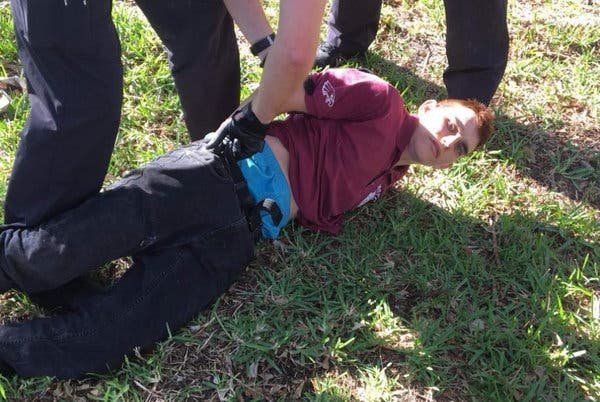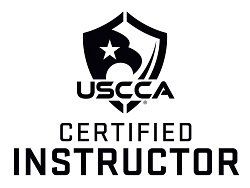Gregory Kielma • December 21, 2023
Guns for Beginners or Advanced Firearm Owners: How to Find Quality Self-Defense Firearm Training

Guns for Beginners or Advanced Firearm Owners: How to Find Quality Self-Defense Firearm Training
By
John Boch
December 20, 2023
Carrying a gun lawfully for self-defense can make the difference between life and death in a critical situation. Yet at the same time it comes along with risks to the carrier thanks to laws and land sharks. Training can help reduce those risks dramatically.
In a perfect world (and most states), you wouldn’t need a license to carry or training in the effective use of a firearm for self-defense. Unfortunately, the world isn’t perfect and neither are we.
In the real world, mistakes happen. All it takes is a single moment of oversight, sloppy gun handling or lousy gear and you can find yourself jammed up and wearing handcuffs. Heaven help you if you have a negligent discharge or make a mistake in judgement about when to pull your gun. Make those kinds of mistakes and you risk everything, including prison.
With good training, the risks attendant with carrying and using a firearm for self-defense are greatly diminished. You’ll become an expert at gun safety and can share those skills with your family and others to make them experts at safety as well. You’ll also learn better situational awareness.
The right training will teach you body language and behaviors that will make you less likely to be “selected” for victimization by bad guys. Best of all, your odds of prevailing in a deadly force encounter will be significantly enhanced. But remember .
All Training Isn’t Equal
With the growing numbers of new gun owners across America, many people are looking for classes, especially those who also want to apply for a carry license. These concealed carry classes tend to be plentiful where required, and are often conducted by National Rifle Association-certified instructors. Classes run the gamut from borderline incompetent to barely adequate to well-presented, comprehensive learning programs.
As an example, in Illinois a year before right-to-carry was passed, there were approximately 42 NRA instructors who had taught ten or more people the previous year. Today, we have over 3000 Illinois State Police-approved instructors.
Beyond learning the basics from an introduction to concealed carry class, there are other programs out there for people looking for basic gun safety skills or to make themselves better shooters…everything from competition and marksmanship to hunting and self-defense.
When it comes to self-defense firearms training, easily the most common are those designed to teach self-defense fundamentals. The best of these “save your bacon” courses will incorporate all three of the following:
Mindset
Mindset is the knowledge and attitudes needed to avoid and, if necessary, survive a confrontation. This includes the mental preparation for dealing with all aspects of a violent encounter at home or in public…and to never give up in a fight for your life.
This particular aspect of training emphasizes conflict avoidance, layering your defenses, and knowing the legal standard by which you will be judged for using lethal force against another. A well-taught class will help you avoid trouble through situational awareness and conflict de-escalation, and also keep you out of jail for inappropriately introducing a weapon – firearm or otherwise – into a situation.
Functional ability/training
Functional ability training consists of knowing how to make your gun work, the ability to use it safely and effectively, and the associated aspects of your gun’s proper care and feeding.
Any reputable course will inculcate you with basic firearm safety. Exercising proper muzzle discipline and keeping your finger off the trigger until you have decided to shoot should be as natural as breathing. Sadly, for those without formal training, poor muzzle control and trigger finger discipline are the norm.
Gun selection plays an important role as well. Some folks may have compatibility issues with a gun they like, making it a bad choice for them. If you can’t manipulate your preferred gun, then you should find another one. Arthritis, hand strength, or other physical limitations are common causes for these issues, but so are a lack of familiarity with a firearm’s controls.
Good schools will steer you away from poor gun choices without making fun of what you may already have. Just because you thought the Beretta 92 looked really cool in Lethal Weapon doesn’t mean it’s a good carry choice for you.
Tactical training
Tactical is not “tacticool” where people dress up in tactical bro gear and pretend they’re something they aren’t. Instead, it’s the practical, hands-on study of the tactics needed to avoid conflict or, failing that, to fight with your personal defense tools.
This includes learning the effective use of cover and concealment, proper presentation of the gun, situational awareness, proper force “application” strategies, malfunction clearing procedures, reloading techniques and so much more.
Reading a book or watching a video helps and can serve to introduce these concepts, but there’s no substitute for doing it yourself under the tutelage of a skilled instructor who will ensure you’re using good technique and minimizing wasted movement. This allows you to act quickly and decisively, without “thinking” about the mechanics of what you’re going to do once you’ve decided to act.
The old saw that ‘you don’t rise to the occasion, you fall to your level of training’ is pretty much true. Indecisiveness, wasted motion and/or poor skills seldom win competitions or gun battles.
Finding a good course
Better, more enjoyable courses will share many common attributes. Here’s how to find for them and some attributes to seek out.
Research the instructor/school. Start with their website. Pictures will often tell the tale of how many people they’re training and how they do it. Is poor muzzle control or other questionable safety issues shown in the pictures? I’ve seen images of everything from people shooting inside a pole barn without proper ventilation to people walking in front of other shooters on an open range. If it’s the same three “students” in all of the photos, that’s a clue. If there are no photos, that should be a clue as well. No website? Why not?
Unless they are very small or very new, there will often be reviews of their training courses online at various gun forums or other locations. If there aren’t any reviews, that should tell you something.
Call and talk with them. Speak with the instructor ahead of giving them your money. Ask them any questions you might still have…anything from describing their previous experience, to inquiring about accommodations for those less-mobile or otherwise disabled. Ask them about how many instructors will be present and the expected ratio of staff to students. Ask them why they became a firearms instructor. Good teachers should have good answers for your questions.
Look for experienced instructors. While everyone has to start somewhere, previous instructional experience measured in years — not months — will usually lead to a better end result for you, the consumer/student. If prospective instructors try to dazzle you with their experience in the Boy Scouts, ROTC, or “personal interest,” look out.
Look for instructors who have continued their education especially if they’ve been to some of the nationally-known schools. They will most likely bring lessons and techniques they’ve learned from the nationally-respected masters to your local class.
Instructors who carry Do the instructors themselves carry every day, or are they just teaching theoretical concepts to their students?
“Team teaching” is a good thing, as instructors can teach to their strengths and students enjoy hearing a more diverse set of perspectives. The end result is usually a better educational experience for the students.
A team of instructors also offers greater opportunities for the student to get more one-on-one help as needed, particularly on the firing line during live fire or in other practical aspects of the class.
If there aren’t enough instructors, there’s little or no opportunity for one-on-one help to help learn, develop, and understand new skills, especially for those new to the gun world.
Previous law enforcement or military instructional experience is a bonus. Again, it’s about bringing applicable aspects of the latest tactics to the class. I’ve been teaching for two decades and seen first-hand that “military” and “police” listed in someone’s credentials, while a net positive, doesn’t necessarily mean a lot when it comes to teaching new skills to new shooters.
Your class isn’t (or shouldn’t be) a boot camp or police academy. What matters is instructors’ ability to communicate with everyday people, teaching and empowering them with the skill sets they need to avoid becoming a statistic in the real world.
High instructor-to-student ratios. I can’t stress this one enough, especially for range exercises. If you have one or two instructors trying to run a range with ten or twelve entry-level students on the firing line at once, you’re getting badly short-changed as a student and it’s not as safe as it could be.
Ability to communicate with everyday people outside of the gun culture. Do schools try not to use jargon and are they willing to spend that extra time (and do they have the staff to do so) to work with new shooters, including women and children? Are they there for those who are a little slow at absorbing the subject material?
This one’s harder to assess outside of personal referrals or recommendations, but it’s especially important if you’re a novice, the lone woman in the class or you’re bringing your kids.
Courses that offer more than the minimum. Good instructors won’t cut corners, but in fact will supplement the minimum required material with valuable and useful (not to mention life-saving) information they’ve learned from other schools or instructors.
Loaner gun availability. Do they have loaner guns for folks who come with inappropriate or malfunctioning firearms, especially for basic firearm/home defense/CCW-type courses?
Sometimes they might even have an armorer on staff, but usually just having a loaner gun and gear (holster, ammo pouches, etc.) will be very helpful. You might have to pay a nominal fee, but loaner availability is a big plus.
Referrals, testimonials, and word of mouth are all things to look for in reputable, experienced instructors. Ask your friends who have been to a class what they thought of it. Visit your local gun club or gun rights organization and ask those present for recommendations on instructors and/or classes.
Red flags
With booming gun sales and more demand for firearm training, there are a lot of instructors — especially newly-minted ones — who vary significantly in skill, ability, and ethics. There are some red flags you can look for in entry-level training to help you avoid a disappointing experience.
Unsafe gun handling: Do instructors demonstrate safe gun handling or do they routinely put their cotton pickin’ finger on the bang switch inappropriately? Are they careless about muzzle control or are there not enough of them to police muzzle discipline of untrained/careless students?
Even worse, do they stand downrange while students are shooting or handling their guns? If you see any of this, the first step is to bring those concerns to the staff. If these problems go unaddressed, it might be a good time to pack your bag and walk. Training-related accidents are very rare, but if those running classes are lackadaisical about safety, it’s time to make yourself scarce. Internet classes: Do instructors attempt to “teach” the classroom segments of the class via the internet? In general, that’s sub-optimal. Given social distancing and limits on the number of people in indoor spaces, that may be done more frequently these days.
Cost: Expect to pay a little more for experienced instructors with solid reputations or classes in big cities where range space is at a premium. But any course that’s advertised for dramatically less than the normal market rate for similar training from similarly-credentialed instructors is a big red flag.
Example: If a hypothetical CCW class goes for $200-250 at most locations and someone’s advertising theirs for $50, beware. Find out why it falls so far outside the norm.
Charging for free items like license application packets: One firearms training group in Illinois charged students $20 each for Florida and Arizona license application packets, even when those respective states send them out to anyone for free.
Cutting corners to do less than the minimum requirements: If it’s supposed to be an eight-hour class and the instructor finishes in six hours, that’s not good. In fact, it may constitute fraud in state-mandated CCW classes depending on local laws.
“Instructors” who haven’t had training: If the only formal training your prospective instructor has had was their “instructor certification” class, that’s cause for concern. Good firearm handling skills and knowledge of self-defense, personal protection, and the judicious use of deadly force don’t come from on high. They are learned.
Instructors teaching flawed, out-of-date or just plain unsafe information: That could get students killed or injured, either from tactical or a safety perspective. Example: “You should carry your gun with an empty chamber and rack the slide on your pants.”
Courses that are unrealistic: Do they teach you to hang upside down out of a pickup truck, firing one-handed under the door? Do they teach you barrel rolls while you hold your gun? Pack your gear and run. Worry about a refund later.
Things you can do to make your training experience better
1. Come bright-eyed and bushy-tailed. Get a good night’s rest. Leave the drinking and nightlife alone the night before.
2. Come with an open mind. Leave preconceived notions behind along with your man-card if you’re a guy. If they teach you something new, try it. You can always discard it later.
3. Dress appropriately. Wear closed-toe shoes, long pants with a belt, and bring along a baseball cap or similar. Ladies, leave the low-cut shirts at home. Also bring rain gear or extra clothing for unseasonably cool weather.
4. Bring your own eye and ear protection. Bring sunscreen and bug spray, just in case.
5. Hydration should be provided by the class sponsors. Hydration is a safety issue, but bring some of your own just in case. Avoid caffeine as it contributes to dehydration.
6. Bring lunch, as necessary along with any medications or other personal needs.
7. Bring your gun, gear and the required amount of ammunition, minimum. Check your gun and gear before the class. If a family of dust bunnies has taken residence in the barrel, clean it. If it’s filthy, clean it. If your ammo dates from the Spanish-American War era, looks corroded, or the lead has turned white, buy new ammo.
8. Bring a backup gun in case your front-line gear goes down, especially for intermediate and advanced classes where you expect to shoot a lot. Ditto for any gear you know you’ll need.
9. For rifle classes (or if you have a fancy optic on your pistol), come to class sighted in. Bring spare batteries for your holographic sights and a sling for your long gun
10. Bring a notepad and pens.
11. Read the recommended gear list and follow those instructions.
12. Turn your phone off or on completely silent mode before class starts.
13. Everyone’s a range safety officer. If you see someone doing something unsafe, ask them to stop. Report any safety concerns to the instructor(s) right away.
14. Address any concerns or questions you might have privately before class or during breaks where possible. Don’t tie up class time.
Do your own research
There’s no need to settle to waste your hard-earned money on a course that will disappoint you. Use the information contained here to help guide your course selection. It’s not that difficult to find training that meets or exceeds your needs instead of settling for a marginal offering that falls short.
Life is precious, training is cheap
Remember, training is inexpensive compared to your life and the lives of your loved ones, so it’s not a place to cut corners. Good training that allows you to avoid becoming a victim and come out on top is truly priceless in the long run.

More Mixed Signals From The U.S. Justice Department On Second Amendment Support We’ve reported lately how the U.S. Department of Justice (DOJ) seems to have a somewhat schizophrenic attitude when it comes to supporting the Second Amendment. On one hand, the DOJ claims to be doing everything it can to restore Americans’ 2A rights. On the other hand, DOJ attorneys will defiantly argue in support of an obviously unconstitutional infringement. In late November, the Firearms Policy Coalition (FPC) and Second Amendment Foundation (SAF) lambasted the DOJ for trying to limit a critical Second Amendment court ruling. After a court ruled that the nationwide ban on concealed carry in post offices is unconstitutional, the DOJ filed a motion to limit the scope of the injunction to only the named individual plaintiffs and to members of SAF and its partner organizations, but only to those who were members when the complaint was originally filed and who have been identified and verified. In other words, the government wants to keep the ban intact for the rest of America’s lawful gun owners. “The critical thing to remember here is that the government is fighting tooth and nail to continue enforcing an unconstitutional law against as many people as possible,” SAF Executive Director Adam Kraut said. “The DOJ’s position that it would be ‘impossible’ for it to know who was protected by the injunction without a membership list is just plain silly. If officials want to know if someone found to be carrying at a post office is a SAF member, they can simply ask.” Less than a week later, Reuters published information about a leaked DOJ plan to expand gun-rights protections with a new office in its civil rights division dedicated to enforcing the U.S. constitutional right to bear arms. The office, called the Second Amendment Rights Section, is expected to open on December 4 and will be dedicated to investigating local laws or policies that limit gun rights, something the Trump Administration has promised since its first week in office.

Michigan Governor Whitmer Surprise: Whitmer’s Anti-Gun Task Force Says Stricter Gun Laws Are The Answer To Violence Mark Chesnut “Garbage in, garbage out” is an old computer science axiom that describes how flawed, biased or poor-quality input will produce equally flawed, biased or poor-quality output. Of course, the principle doesn’t only apply to computer science. The entire gun control world often operates on this same premise. So, consider how unsurprising it truly is that a task force that Democrat Michigan Gov. Gretchen Whitmer created to make policy recommendations to curb violence is urging state lawmakers to ban the possession of so-called “assault weapons” and “large-capacity” magazines. According to a report at michiganadvance.com, Dr. Natasha Bagdasarian, the state’s chief medical executive and the task force’s chair, said the group used a “public health” approach to addressing “gun violence” in the state. “There are a lot of issues here that have not historically been thought of as public health issues, and only when we’ve taken this really comprehensive public health approach have we been able to implement real change,” Bagdasarian told the newspaper. “Gun violence is one of those issues.” It’s easy to immediately see how much garbage went into this project, resulting in the garbage that came out. First, Whitmer tasked the group with finding an answer to the “gun violence” problem. That is, indeed, garbage.

Florida: Pro-Gun Bill Repealing Adult Age Discrimination Advances to House Vote Yesterday, the House Judiciary Committee voted 13-7 to favorably report pro-gun House Bill 133, which restores the ability for young adults to lawfully purchase firearms. The bill now heads to the full House, where it is eligible for a vote when the 2026 regular session begins in January. House Bill 133, sponsored by Rep. Tyler Sirois, restores the ability for young adults to acquire firearms by lowering the minimum age requirement to purchase from 21 to 18. Since 2018, Florida has completely banned 18-to-20-year-olds from purchasing a firearm of any kind, for any purpose. A young adult in violation faces stiff penalties, including up to five years of imprisonment, a fine of up to $5,000, or both. On May 16th, the NRA filed a petition for a writ of certiorari in NRA v. Glass, requesting that the U.S. Supreme Court hear its challenge to Florida’s law prohibiting adults under 21 from purchasing firearms.

Brady X Poster Gets Undies In A Bundle Over ‘Less-Than-Lethal’ Weapons Proposal Mark Chesnut When an organization goes somewhat berserk on social media, passionately stringing post after post together ostensibly to make some kind of point, you’d normally figure that topic is probably a top priority of that group. That’s why gun-ban group Brady’s recent freak out over less-than-lethal weapons is somewhat bewildering. Brady: NONSENSE Brady, formerly called Handgun Control Inc. before leaders learned that most Americans were against “controlling” handguns, has never seen a gun control scheme that it didn’t embrace. But until the recent flurry of social media activity, so-called less-than-lethal weapons didn’t seem to be on the group’s radar much. That changed big time on November 19, when whoever was handling the organization’s X (formerly Twitter) account. “While the world focused on the Epstein files, Congress took up a dangerous bill that sponsors say is to help law enforcement get greater access to ‘less-than-lethal’ weapons,” Brady posted in a typical manner critical of anything seemingly in the pro-self-defense category. “In reality, it deregulates dangerous weapons to help a billion-dollar weapons industry make more money.” That’s all well and good, but the author seemed not to be able to let the matter go, soon posting more on the topic just a few minutes later. “This bill isn’t from a well-intentioned lawmaker or a group working to prevent deadly police violence,” Brady posted. “It’s backed by the manufacturers of so-called ‘less-than-lethal’ weapons, like tasers, who have started making products that are appropriately classified as guns under the law.” Still apparently not having said enough, the Brady writer entered rant mode with yet a third post a short time later. “In their effort to skirt the regulation of their products, this bill would narrow the definition of firearm and open a new market for untraceable ghost guns, which have already led to thousands of deaths in the last decade,” Brady posted.

Extremely Troublesome Department Of Justice Brief Draws Stark Warning From GOA Mark Chesnut A bold brief, recently filed by the U.S. Department of Justice (DOJ) in a case challenging the National Firearms Act (NFA), has one gun-rights organization sounding an alarm. According to Gun Owners of America (GOA), on November 20, the DOJ, in the case Silencer Shop Foundation v. ATF, filed an “outrageous brief that embraces an alarmingly expansive theory of federal authority.” That assertion runs directly afoul of President Donald Trump’s promise to protect the Second Amendment for all Americans. In responding to GOA and GOF’s “One Big Beautiful Lawsuit,” the DOJ treats Congress’ removal of the historic $200 tax as a pretext to rewrite the limits of congressional power, advancing an argument that would open the door to federal regulation far beyond anything the Framers intended. “GOA and GOF condemn Attorney General Pam Bondi and President Trump’s Department of Justice (DOJ) for doubling down on enforcement of an archaic and unconstitutional law while simultaneously offering legal theories that would expand federal power to historic levels,” GOA said in a news release revealing the DOJ’s actions. “This is especially striking from an administration that had promised to respect the Second Amendment and review burdensome agency rules.” As GOA further explained, the implications of the DOJ’s stance are immediate and ominous.

If you have a concealed carry permit and you have a gun with you, and you walk into or need to go into a store that doesn’t allow guns, what do you do? Says Kielma, this is an easy one for me. I do not and never will enter a place that has ca no "firearms allowed" , ever. I’ll spend my hard-earned CASH SOMEPLACE ELSE. If I miss the sign by accident and enter then, I’ll suffer the consequences. NOTE: Please check for signs on doors. Keep your firearm concealed and no one should bother you if you miss the door sign. Let’s take a look at BOB an avid reader of my website would do: I have a concealed carry permit, and I carry concealed all the time. Concealed means unseen. Unless they have metal, detectors and security guards wandering, I simply ignore the signs. The difference would be places whereby actual law, you cannot be armed on the premises. Federal and government buildings for instance. True story. We went to see a show. We had to park some distance away and when we got to the place to present our tickets… you guessed it, they were wanding everybody. My wife says to me, “well, you've got your ticket and seat assignment, hurry back.” I just nodded and stayed in line. When she got up there, they wanded her and glanced in her purse. I was next. I told the female doing the wanding that I was going to set things off because I had a lot of metal on me. I then pulled a suspender strap from under my coat and showed her the metal concho on it. She told me OKAY, swiped the wand down my front and back - it went off - and she waved me through. When we took our seats my wife side mouths to me, “one day you're going to have to tell me how you did that.” “Old Jedi mind trick I replied, these are not the droids you're looking for.” What was I carrying? Full size main firearm with two backup magazines, backup firearm with two speed strips, Leatherman Wave, Swiss Champ, Thru Nite flashlight, neck knife and a couple other pocketknives and a smartphone. Several points: No place on the tickets did it say no firearms or pocketknives. Matter of fact there was no mention of security. This was a public venue. I had already paid to be there. My permit was valid in the State I was in. Concealed means just that. My 4th Amendment rights didn't evaporate with my purchase of a ticket. The fact I got through security meant others may have too. Was this event taking legal responsibility for my security and that of my family? Of course not. As we were leaving my son said, “so much for their security.” He was right. Security unless you have the Secret Service providing it is pretty much an illusion/delusion.

What's more powerful than the .308 and .30-06 for certain types of hunting? How does it compare? What do you think? .45 70? Gregg Kielma .45-70 ? As a straight-walled cartridge, it and similar types of ammunition are favored for deer in states were bottlenecked cartridges, such as 30–06, cannot be legally used. In its original loading, it delivers 2,221 joules of energy but has been loaded much hotter to the point that 3800–4600 joules are possible. A standard .308 load delivers around 3600 joules and 30–06 around 3800. It is a good example of “knockdown power" type of ammunition in that a large chunk of lead, traditionally not moving as fast, hits hard because of its mass. More modern cartridges made use of smaller bullets and smokeless powder to create ammunition that hits hard with a moderate projectile and much higher velocity. The tradeoff is that .308 and .30–06 have far less muzzle drop at long ranges. Off the top of my head, the projectile drops something like 4′ at 400 yards, but it has been a while since I looked that up. .308 is much flatter shooting. Just my opinion. What do you think?

Is it safe to unload a handgun every time we get home? Gregg Kielma This depends on several different situations. You must find what works better for you, and your family. They did that for years in the military. They would safe and clear everyone’s weapons before they went into the mess halls. They would take a pistol out of a perfectly solid holster that could be dropped out of an aircraft and not go off and proceed to pull the slide and the trigger into a clearing barrel to make sure it was empty. Occasionally it wasn’t. It was a bad idea. So eventually they stopped having people do it and do you know what!? No one was shooting guns in the mess hall. Every time you handle or have people handle guns they can go off. Especially WHEN PART OF THE PROCEDURE IS PULLING THE TRIGGER. A better procedure is NOT TO PULL THE TRIGGER. Again, if your weapon is loaded, the firearm you carry should be. You shouldn’t unload it unless you are cleaning it or are going to swap it out with another carry weapon in the gun safe. It is said that you do need to release spring tension on magazines, it is said by all the old guys, but that is every few years and you should be cleaning any gun more often than that. Loading and unloading your weapon every single day is something I suppose you could do. I wouldn’t if I wasn’t being paid to do so. My EDC stays loaded for a few months at a time. Then I cleaned it and get it ready for another 3-month tour. Every time you mess with a gun you have the chance of an accidental discharge. It is designed to sling supersonic metal out the front of it. Accidents happen every single day and the way to increase the number of accidents is unnecessary gun handling. Do not push yourself past competence and into complacency. Let’s Take a LOOK: • You do something a hundred times, and you get good at it. • A thousand times and you get great at it. • You do it 6,000 times and you get complacent because you have done it TOO much and that is when you get bit. That is why you can’t do the same job for decades and maintain the same exact level of proficiency. Chances are you may or will get careless.

I have a concealed permit to carry and if I find myself in a threatening situation, can I show it to defuse the threat without it being seen as brandishing even though it resolved peacefully? Gregg Kielma Gregg Kielma gets asked this question a lot. Says Kielma, “I get asked this a lot and can give you what I’d do if I was in a bad situation I didn’t start nor could not avoid or escaped from. Let’s take a look”. Never pull a weapon to threaten and never fire a warning shot in life-threatening situations. If you reveal a weapon, someone might rush you, disarm you, and use it against you. If you are in a life-threatening situation, stay calm and use verbal de-escalation without making threats. If that fails and you're confronted by a violent person, do not let them get close—keep moving back and maintain at least 25 feet of distance. If they get any closer or fail to comply with your instructions, in a loud voice shout, drop your weapon, drop your weapon. As a last resort and only as a last resort, draw your weapon and fire shots at center mass. Continue firing until there is no longer a threat. When you shout "drop your weapon" it lets others know you felt threatened. If a shooting occurs, you will be arrested—do not speak to police without an attorney present. Invoke your 4th and 5th amendment rights. Tell them you'll provide a full statement once you have legal counsel; you only get one opportunity to do so properly. You cannot hesitate in a life-or-death situation. If you do, you will be among the dead. Kielma’s final thought, says Gregg, “please take my training CCW course. I provide a lot of information in the class that is easy to understand and may keep you out of jail and alive.

Indianapolis Pimp Given Three Life Sentences in Federal Prison for Running Sex Trafficking Enterprise and Committing Murder Tuesday, November 25, 2025 U.S. Attorney's Office, Southern District of Indiana Editor's Note: This sentencing occurred on September 25, 2025, but was not published at that time due to government shutdown. Press release posted and made available following the return to normal operations. INDIANAPOLIS- Kristopher McDonald, 37, of Indianapolis, has been sentenced to three life sentences in federal prison. In May of 2025, a federal jury found McDonald guilty of the following eight counts related to his operation of a violent human trafficking enterprise: Count 1: Murder in aid of racketeering activity. Count 2: Brandishing and discharging a firearm during a crime of violence. Count 3: Possession of a firearm by a convicted felon. Counts 4 & 5: Sex trafficking by force, fraud or coercion. Count 6: Enticing an individual to travel in interstate commerce to engage in prostitution. Counts 7 & 8: Travel act; a federal crime to engage in interstate or international travel, for the purpose of furthering certain "unlawful activities.” According to trial testimony, from June 2023 through April 2024, Kristopher McDonald orchestrated and led a human trafficking operation in Indianapolis and other states. During this time, he recruited and exploited women, some from out of state, for commercial sex, maintaining strict control over the operation. McDonald managed all aspects of the criminal enterprise, using force, fraud, and coercion to control the activities of the women. McDonald recruited the women over the internet, making false promises to them to lure them into his enterprise. He then used several means to manipulate and control the women to engage in commercial sexual activity. McDonald limited the victims’ access to the outside world by taking control of their personal identification, cash cards, and cellphones. McDonald threatened the women with physical violence and directly employed violence, including pistol whipping, to compel them to engage in commercial sex. McDonald also caused the women to become addicted to crack cocaine by rewarding them with the drug when they followed his orders and withholding it when they did not make enough money on a given day. McDonald also threatened to kill the victims and their families if they contacted the police. McDonald often compelled the victims to engage in commercial sexual intercourse on nine or ten occasions per day. The trial testimony also established that on October 11, 2023, McDonald murdered another man in furtherance of his human trafficking organization. After the man engaged in commercial sex with one of the victims, McDonald emerged from an adjacent room and demanded an additional $200 from the man at gunpoint. The male victim drew his own firearm in self-defense and shot McDonald . McDonald ran back into the adjacent room, loaded his firearm with a magazine, and shot the male victim eleven times in the back as he attempted to flee the hotel room. McDonald , a previously convicted felon, was not permitted by law to possess the firearm that he used to murder the male victim. “Kristopher McDonald’s reign of terror is over, and our community is safer because of it. This sentence sends a clear message that those who exploit vulnerable individuals through violence, addiction, and fear will face the full force of federal justice,” said Tom Wheeler, United States Attorney for the Southern District of Indiana. “I am grateful for the outstanding work of our law enforcement partners, whose collaboration and dedication made this prosecution possible, and to the survivors, whose strength and courage in coming forward were instrumental to securing justice.” “There is no place in our society for criminals like Kristopher McDonald . The crimes he committed were despicable, outrageous, and cut to the very core of our moral fabric. Life in prison is exactly what he deserves — and ATF could not be prouder of the agents whose relentless work made this outcome possible,” said ATF Columbus Field Division Special Agent in Charge Jorge Rosendo. “Kristopher McDonald wielded violence as a weapon to coerce victims, expand his sex-trafficking operation, and maintain power through fear,” said Adam Jobes, Special Agent in Charge, IRS Criminal Investigation, Chicago Field Office. “His life sentence removes a ruthless predator whose presence threatened the very fabric of our communities—and the importance of that removal cannot be overstated. IRS Criminal Investigation will continue leveraging its forensic accounting expertise to follow the money, dismantle criminal enterprises, and bring violent offenders like McDonald to justice.” The Bureau of Alcohol, Tobacco, Firearms, and Explosives, Internal Revenue Service Criminal Investigation, and IMPD investigated this case. The sentence was imposed by U.S. District Judge Tanya Walton Pratt. U.S. Attorney Wheeler thanked Assistant U.S. Attorneys Bradley Blackington and Michelle P. Brady, who prosecuted this case.















